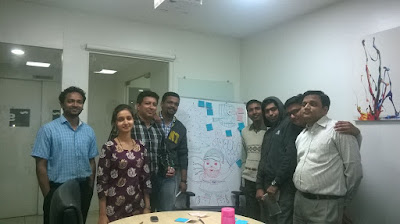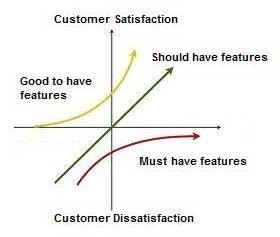What
is a fix bid (Agile) project?
This is a general understanding that fix bid
project means fix price, fix time, fix scope and obviously with quality.
This requires detailed and accurate requirements. ‘The
IRON TRIANGLE’…
However a ‘Fix bid AGILE project’ is bit
different from the above understanding. How? We will see it in the later part.
Now
let us understand why customers ask for fix bid project?
·
Many customers do not have
significant idea, what agile means. They think that from an agile project they
will get iterative deliveries hence more control on project and less surprises
at later stages.
·
Customers do not want to take
any financial risk.
·
Customers (generally government institutions) need to choose between bids.
They have to stick with fix bid project which also needs to be agile.
·
Lack of trust between Clients
and Contractor. And this is obvious as every time the projects are not from the
same clients or from the clients which know enough about contractor prior to
the project.
What
benefits a contractor may anticipate from fix bid project?
Not all the time but at times contractor
also gets benefited from fix bid agile projects.
·
A contractor can predict his
cost and benefits.
·
Planning in a fixed price
project is easier. As cost and benefits are predicted in advance, the other
planning as scheduling and resourcing becomes easier. Contractor can focus on
other projects easily as fix bid projects scope and timelines also are
fixed.
·
Generally this happens when the
domain is well known to contractor. If the contractor is selling its product
then the expertise is already with contractor. Say, if we are selling our own
product (company’s product) then we already have enough expertise and SMEs with
us. We know almost all features/functions in advance. Yes, there may be a few
customization needed as per the client’s requirement. If planned well, we can
go ahead with fix bid agile projects.
What
should be the way of collaboration between client and contractor?
·
First of all client should know
what Agile means and how an agile project will be developed and delivered.
·
Preferably a Product owner from
client should be available, if not, contractor may provide agile training to a
SME (Subject Matter Expert) - a representative from client. If this is not
possible, offer client a proxy Product owner.
Fix bid AGILE project
In most of the cases client is more focused
on TIME (Deadlines) and BUDGET. So the only option left flexible is SCOPE. Though
clients forces for fix SCOPE also but in Agile project the scope is drilled
down from VISION to Stories (even more up to tasks). So once we discuss about
the scope, we could provide client a range of Stories expected to be covered in
the Fix Time and Fix Budget. Sometimes stories may still be in form of EPIC
(Big story).
It had been debated many times that Product
owner from client asks for inclusion of more and more stories in sprints. In
such cases ScrumMater and the team can guide Product owner about the team’s
capacity. In my opinion if the team (Product owner, ScrumMaster, Development
team) is working in collaboration such things could be tackled easily. After all
Product owner also works for success of product/project and he/she responsible
for the same. :-)
How
to deal with Change requests
Change is inevitable. Agile welcomes
Changes and that is the essence of Agile. However in Fix bid it creates
confusion. Change is inevitable but
BUDGET is fix :-).
The best way to deal with Change request is
to drop comparatively less important user stories (equal story points which the
change request have). Having fix bid project, it becomes tough to convince
clients. If you could do that, go-ahead, get some more bucks from client.
More
on how to judge importance of a user story can be found at:






